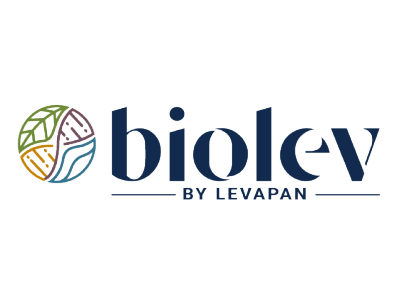Research in this field has shown that experiences such as drug exposure, trauma, and chronic stress can activate or suppress specific genes, including those linked to addiction. For instance, prolonged stress can alter the way genes regulate the brain’s reward system, making an individual more susceptible to substance use disorders. Similarly, repeated drug use can trigger changes in https://ecosober.com/ gene expression that reinforce compulsive behaviors, increasing the likelihood of an individual abusing drugs or alcohol. Research in addiction genetics has identified specific genes that contribute to the biological basis of addiction and substance use disorders. For instance, variations in the DRD2 gene affect dopamine receptors in the brain, increasing the likelihood of addictive behaviors. Other hereditary addiction factors include genetic influences on emotional regulation, stress response, and impulse control, all of which can shape an individual’s susceptibility to addiction.
GENE-ENVIRONMENT INTERACTION
- High levels of dopamine can fuel poor impulse control and tilt someone toward addictive behaviors.
- Family dynamics, parental substance use, and exposure to substance abuse within the home environment can all contribute to a person’s likelihood of developing addiction.
- However, 69% of the total genetic variance on alcohol dependence, and 64% of the genetic variance on illicit drug dependence resulted from the genetic factor shared across externalizing psychopathology.
- Drugs interfere with the way neurons send, receive, and process signals via neurotransmitters.
To fully comprehend the complexity of this multi-faceted phenomenon, it is essential to comprehend the genetic basis of addiction. Research in genetics sheds light on the hereditary susceptibilities and familial tendencies that play a role in addictive behaviors. To better understand the genetic landscape of addiction and how to prevent and cure it, scientists are investigating genetic markers, familial relationships, and hereditary patterns. Rare genetic variants relevant to addiction have been found within the serotonin receptor 2B gene (HTR2B) and MAOA, and several of the functional CYP26 alleles are also rare or uncommon. Both HTR2B and MAOA influence impulsivity and behavioral control and findings for these genes in humans remarkably parallel animal models. Candidate gene and genome-wide analyses are increasingly integrated to identify genetic variations influencing addiction.
How do environmental factors trigger epigenetic modifications that influence addiction?
- CYP2A6 is responsible for metabolizing nicotine and variability in the metabolic rate contributes to the susceptibility of tobacco dependence, withdrawal symptoms and the risk of lung cancer (53,54).
- Throughout history, there has been an ongoing debate about the extent to which intelligence is influenced by genetics or environmental factors.
- As research continues to evolve, integrating genetic insights into clinical practice holds promise for reducing stigma, improving outcomes, and tailoring interventions—ultimately transforming approaches to combating addiction.
- While no single gene causes addiction, the combined effect of multiple genetic variations and epigenetic changes creates a biological framework that interacts dynamically with environmental factors.
Addiction is a complex condition shaped by a combination of genetic, environmental, and familial factors. While genes like DRD2 and OPRM1 may increase vulnerability to substance use disorders, factors such as childhood trauma, parental substance misuse, and socioeconomic stress play equally significant roles. A family history of addiction often reflects both inherited traits and shared environmental risks. Studies have found that individuals with a family history of substance abuse are more likely to develop an addiction themselves. This suggests that genetic factors passed down through generations can contribute to an individual’s vulnerability to addictive behaviors. Substance abuse is a complex issue that can have detrimental effects on an individual’s health, relationships, and overall well-being.
Risk Factors: Varied Vulnerability to Alcohol-Related Harm
Gender identity is a complex trait that is influenced by a combination of genetics and environmental factors. While genetics provide the blueprint for an individual’s physical characteristics, the environment plays a crucial role in shaping their gender identity. The nature versus nurture debate has long pondered the question of whether genetics or environment has a greater impact on human development. While genetics certainly contribute to cognitive abilities through the inheritance of certain traits, it is the environmental influences that shape and refine these abilities. Environmental factors play a crucial role in shaping an individual’s cognitive development. While hereditary and genetics provide a foundation for cognitive abilities, the environment in which a person grows up greatly influences their cognitive skills and overall intelligence.
- If addiction runs in your family, taking proactive steps can significantly reduce your risk.
- Research has shown that certain behavioral traits, such as sleep duration and morningness-eveningness preferences, have a moderate to high heritability.
- Family therapy sessions help everyone understand what’s happening on a biological level, which means family members can offer better support and recognize warning signs early.
- Your provider will ask you (and possibly your loved ones) questions about your patterns of substance use or problematic behaviors.
- For some substances, such as opioids, the withdrawal symptoms are so severe that they create significant motivation to continue using them.
- Appreciating the bidirectional interaction between nature and nurture helps shed light on the intricacies of human development and opens up opportunities for further research and exploration in this field.
Other Influences
The environment, including parenting style, can greatly influence an individual’s behavior and development. Parenting style can range from authoritarian to permissive, and each style has its own impact on a child’s development. Furthermore, acknowledging the role of both genetics and environment can help dispel the notion of fixed abilities or limitations. It reinforces the idea that education is not solely determined by innate traits but can be influenced and improved through the nurturing and supportive power of the environment. Furthermore, recent research has highlighted the role of gene-environment interactions in intelligence. Certain genetic variants may be more or less influential depending on the environmental context in which an individual grows up.
These genetic influences affect neurotransmitter availability and receptor function, thereby shaping individual differences in how the brain perceives reward, processes cravings, and develops tolerance or withdrawal symptoms. This collective impact on neurochemical signaling pathways underpins many facets of addiction vulnerability. Similarly, the gene COMT affects dopamine breakdown in the synaptic cleft, influencing cognitive function and emotional responses, which can alter susceptibility to addictive behaviors. Polymorphisms in the OPRM1 gene modify the effectiveness of endogenous and exogenous opioids, impacting both the experience of pleasure and the efficacy of treatments. The nature vs. nurture debate is a long-standing discussion in the field of psychology that seeks to determine the degree to which genetics (nature) and environment (nurture) influence human behavior and development. Understanding the link between environment and education can guide https://digitalvision-as.com/sober-living/helping-an-alcoholic-in-denial/ educators in creating environments conducive to learning and growth.
It is this interaction between nature and nurture that determines an individual’s unique characteristics and adaptation to their surroundings. Recognizing the dual roles of genetics and environment is essential for devising comprehensive addiction prevention and treatment plans. Since addiction stems from a combination of inherited biological factors and external influences, interventions that consider both aspects tend to be more effective. Environmental influences such as stress, trauma, drug exposure, and adverse social conditions can initiate epigenetic changes—alterations in gene activity that do not change DNA sequences but affect how genes are expressed.
It’s a reciprocal relationship, whereby your experiences shape your brain function, and your brain function shapes your experiences. Oxford House But from the biological camp’s perspective, the changes are driven by your biopharmacological processes. Sustainable recovery is possible and the best version of yourself is waiting at our Atlanta and Savannah, Georgia addiction recovery centers. We’ll give you skills to discover your self-worth and show you the tools for a life of hope and promise. Free By the Sea offers a variety of services and programs, including those listed on this website, that are subject to change based on availability of providers and other circumstances. As clinically indicated and where possible, FBTS will ensure that clinical programs serving existing patients will continue until the patient’s treatment is concluded.
While genes do not directly code for specific phobias, they can influence an individual’s predisposition to developing them. Twin studies have shown that identical twins, who share 100% of their Is Addiction Genetic: Hereditary Addiction Factors genes, are more likely to share phobias compared to non-identical twins, who share only approximately 50% of their genes. Identical twins, who share 100% of their genes, have a higher concordance rate for schizophrenia compared to fraternal twins, who share only 50% of their genes. Research has shown that both genotype and environment play a role in the development of anxiety disorders.







